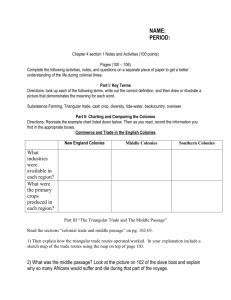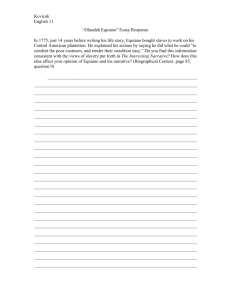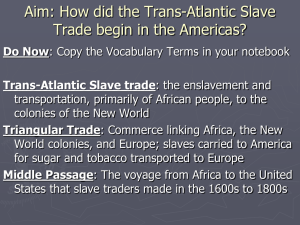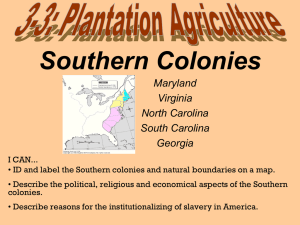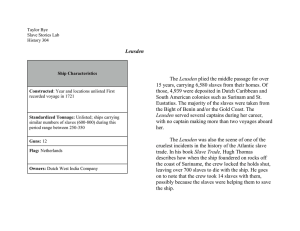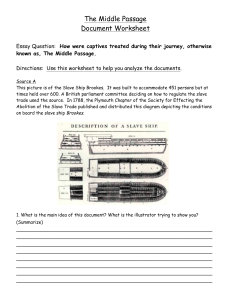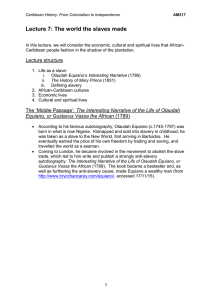Triangular Trade notes
advertisement
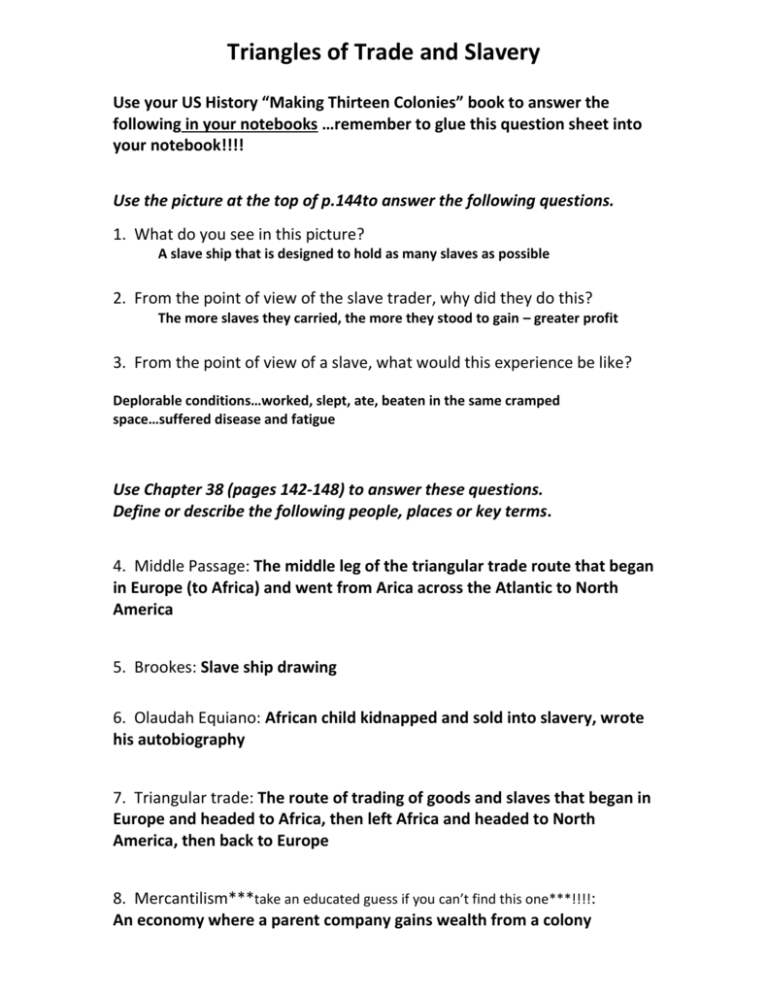
Triangles of Trade and Slavery Use your US History “Making Thirteen Colonies” book to answer the following in your notebooks …remember to glue this question sheet into your notebook!!!! Use the picture at the top of p.144to answer the following questions. 1. What do you see in this picture? A slave ship that is designed to hold as many slaves as possible 2. From the point of view of the slave trader, why did they do this? The more slaves they carried, the more they stood to gain – greater profit 3. From the point of view of a slave, what would this experience be like? Deplorable conditions…worked, slept, ate, beaten in the same cramped space…suffered disease and fatigue Use Chapter 38 (pages 142-148) to answer these questions. Define or describe the following people, places or key terms. 4. Middle Passage: The middle leg of the triangular trade route that began in Europe (to Africa) and went from Arica across the Atlantic to North America 5. Brookes: Slave ship drawing 6. Olaudah Equiano: African child kidnapped and sold into slavery, wrote his autobiography 7. Triangular trade: The route of trading of goods and slaves that began in Europe and headed to Africa, then left Africa and headed to North America, then back to Europe 8. Mercantilism***take an educated guess if you can’t find this one***!!!!: An economy where a parent company gains wealth from a colony Triangles of Trade and Slavery Use Chapter 38 (pages 142-148) to answer these questions. 9. Why did England make it difficult for the colonies to produce many manufactured (man-made) goods? England did not want to compete with colonists over manufactured goods. 10. List some specific items traded in the Triangular trade, and the continental direction they took. Tobacco, sugar, codfish, lumber, guns, clothing 11. What was the impact of the Brookes drawing of 1788? (see blue text on page 144) It led to a law that limited the number of passengers allowed on a ship 12. Using the primary source material, what were the experiences of Olaudah Equiano, use quotes from his text to support your answer. Never saw people so brutally treated – blacks and whites Saw a white man flogged so badly that he died The ship’s masters through the dead man overboard like some kind of animal The slaves lived in constant fear 13. Why do you think the author refers to the triangular trade as “terrible” and “nasty”? Slaves were traded and treated in deplorable conditions. They were treated no better than the tobacco and rice on board. 14. Between the early to late 1700s, what happens to the black population of the American colonies? The black population in 65 years grew 10X larger…from 75,000 to 750,000 in 65 years
